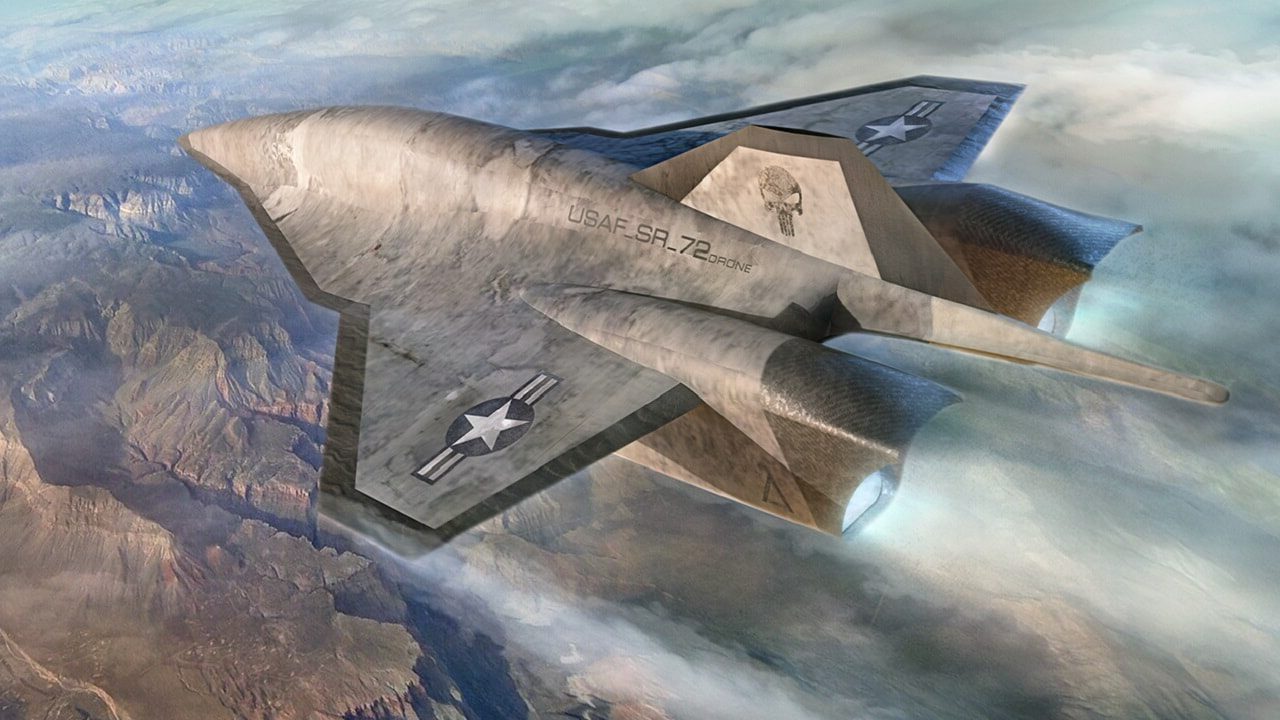Meet the SR-91 Aurora – The moniker “Aurora” first appeared in a black program spy plane request in the mid-1980s. Since then, the mysterious and mythical(?) SR-91 reconnaissance aircraft has remained an enigma. According to rumors, the unreal hypersonic airframe could reach Mach 5+ – or five times the speed of sound – which would make the Aurora the fastest plane to ever fly the skies.
While little to no evidence exists that such an aircraft was ever constructed, some aviation analysts have argued that the SR-91 could have at least reached the prototype stage.
Where did the SR-91 Aurora spy plane stores originate?
When Aviation Week and Space Technology magazine published the news that the term Aurora had been inadvertently associated with the $455 million budget for “black aircraft production” in 1985, the super-spy plane myth emerged.
According to the story, the magazine spread noted that “Project Aurora” actually referred to a series of unique airframes and not just a singular airframe. As explained by Sandboxx News, “The Sun-Sentinel corroborated those numbers, seemingly suggesting the Pentagon had a secret program going on that was expected to cost significantly more than even the B-2 Spirit at the time, which was estimated to cost between $900 million and $1 billion annually.”
Around this time, the Air Force was seeking a new airframe to replace the Lockheed Martin SR-71 “Blackbird” strategic reconnaissance aircraft. While the Blackbird could operate at high speeds and altitudes, each airframe could only fly one time per week due to extensive turnaround requirements. Additionally, the SR-71 was extremely expensive to fly.
The airframes needed around $200-300 million annually to function well. For these reasons among other political factors, the Blackbird was retired after 13 years of service with the Air Force.
According to fighterjetsworld.com, some aviation buffs believed that the Aurora project was ultimately canceled due to “a shift from spy-planes to high-tech unmanned aerial vehicles (UAVs) and reconnaissance satellites which can do the same job as a spy plane, but with less risk of casualties.”
Potential sighting of the Aurora over the years
In 1989, an engineer claimed to have seen a triangular-shaped airframe resembling renderings of the Aurora over the North Sea. However, since the SR-91 supposedly can fly at speeds five times faster than sound, the likelihood that it could be spotted in flight by a human is low. The plane was more likely a B-2 bomber or perhaps an F-117 Nighthawk, which the Air Force was flying at the time. In 2006, the British Ministry of Defense released a report indicating that the U.S. Air Force has prioritized plans to produce a Mach 4-6 highly supersonic airframe.
However, “no conclusive evidence had emerged to confirm the existence of such a project.” The only other slithers of “evidence” regarding the existence of the SR-91 hypersonic airframe is the “sky quakes” reportedly heard over Los Angeles over the years. The fast planes heard buzzing over the city more likely originated from Area 51 in Nevada and are not in fact a secret hypersonic platform.
Although close to no hard evidence can corroborate the story that a super-secret hypersonic airframe was constructed, the legend of the Aurora SR-91 lives on. However, considering how far technologies have advanced since the mid-1980s, some of the capabilities connected to the Aurora airframe may very well come to fruition in the near future.
MORE: Joe Biden Keeps Breaking the Law
MORE: F-35 – The Best Fighter Jet Ever?
MORE: SR-72 – A Mach 6 Bomber?
MORE: Su-57 – Is Russia’s Stealth Fighter Doomed?
Maya Carlin is a Senior Editor with 19FortyFive. She is also an analyst with the Center for Security Policy and a former Anna Sobol Levy Fellow at IDC Herzliya in Israel. She has by-lines in many publications, including The National Interest, Jerusalem Post, and Times of Israel.
NOTE: The image is of an artist rendering of the SR-72. There are no solid images of the SR-91 that are usable in the public domain.
We have fixed a wording choice in the text. We apologize for the error.

